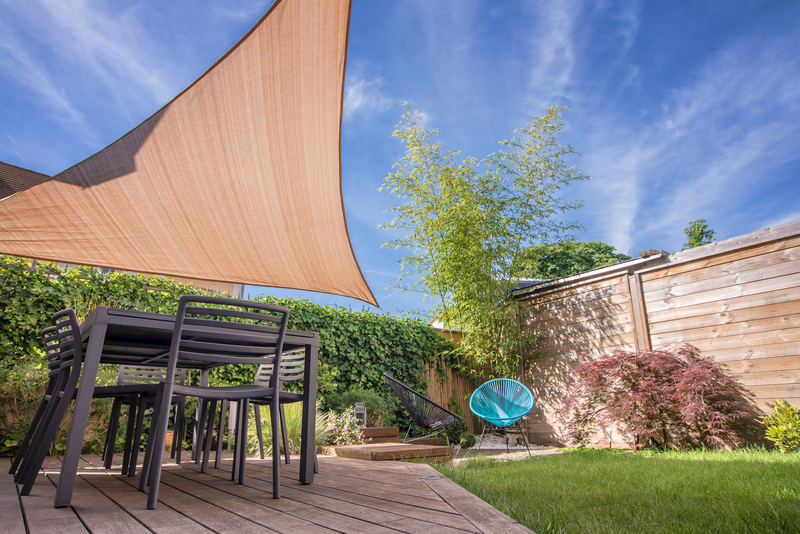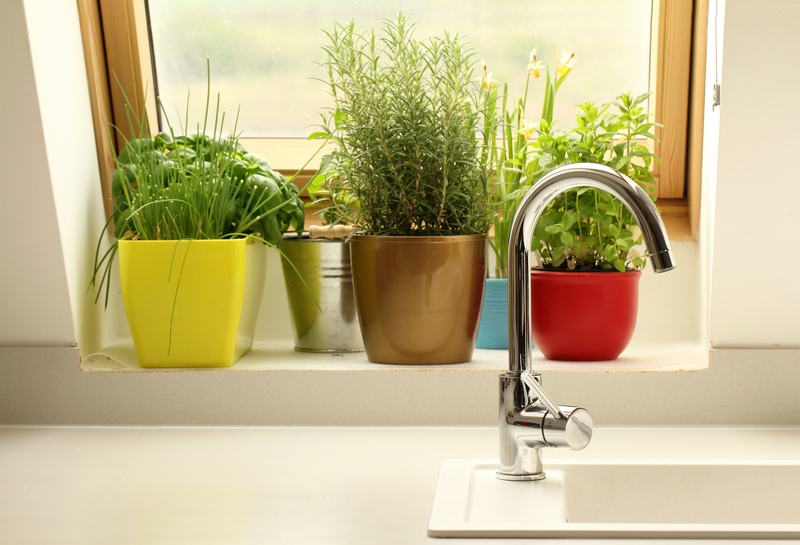Creating a Lush Indoor Herb Haven
Posted on 03/07/2025
Creating a Lush Indoor Herb Haven: Your Ultimate Guide
Are you dreaming of transforming your living space into a sanctuary filled with aromatic, vibrant, and lush indoor herbs? Creating an indoor herb garden isn't just a trend - it's a lifestyle shift towards fresher flavors, cleaner air, and a deeply rewarding hobby. In this comprehensive guide, we'll share everything you need to know to establish a bountiful indoor herb haven that will thrive all year long.

Why Build an Indoor Herb Garden?
There are countless benefits to growing herbs indoors:
- Freshness: Snip what you need for cooking, teas, or natural remedies right at home.
- Convenience: Year-round access to nutritious, aromatic greens.
- Cleaner Air: Many herbs purify indoor environments, improving air quality.
- Aesthetics: Lush greenery enhances your home decor and well-being.
- Therapy: Tending to your indoor herb garden is a relaxing and meditative activity.
Best Herbs for Your Indoor Herb Garden
The first step towards a thriving indoor herb oasis is choosing plants that flourish in an indoor environment. Some of the best herbs for indoor growing include:
- Basil - Thrives in warm, sunny spots; perfect for Italian dishes.
- Mint - Fast-growing and aromatic, ideal for teas and garnishes.
- Chives - Hardy and low-maintenance, adds mild onion flavor.
- Parsley - Great for both sunlight and partial shade.
- Rosemary - Loves sunny windowsills; classic for savory meals.
- Thyme - Compact and drought-tolerant with fragrant leaves.
- Cilantro - Fresh flavor for Mexican and Asian cuisine.
- Sage - Unique texture and aroma, robust in the right conditions.
- Oregano - Essential for Mediterranean cookery; easy to grow indoors.
Tip: Start with 3-5 different herbs to keep things manageable as you develop your herb gardening skills.
Choosing the Right Spot for Your Herb Haven
Lighting is the most crucial factor for lush indoor herb gardens. Most herbs need at least 6 hours of sunlight per day. South or southwest-facing windows are ideal. For homes with limited natural light, supplement with full-spectrum LED grow lights to keep your herbs vibrant even during gloomy winters.
Humidity and Air Circulation
Indoor herbs enjoy moderate humidity and good airflow. A pebble tray filled with water or a small humidifier can help keep the air moist, especially in winter. Ensure your plants aren't crowded so air can circulate freely, reducing the risk of mildew and pests.
Selecting Containers and Potting Mix
Choosing the right containers is vital for healthy, lush indoor herbs. Here are key things to consider:
- Drainage: Ensure all pots have holes to prevent waterlogging.
- Material: Terracotta, ceramic, and plastic pots each have their pros and cons. Terracotta is breathable, but dries out faster; ceramic retains moisture; plastic is lightweight and retains water well.
- Size: Start with a pot at least 6-8 inches wide. Roots need room to grow.
Use a high-quality, organic potting mix designed for indoor plants, not garden soil. These mixes offer better drainage and sterile conditions to prevent pests and diseases.
Planting and Caring for Indoor Herbs
Starting from Seeds or Starter Plants
- If you want the full experience, start your garden with seeds. It's economical and rewarding, but requires patience.
- For instant gratification, starter plants from a nursery or grocery store are perfect. Transplant them into your chosen pots to jumpstart your lush indoor herb collection.
Watering
Overwatering is a common issue for indoor herb gardeners. Most herbs prefer soil that's moist but not soggy. Stick your finger about an inch into the soil; water when it feels dry. Always empty drainage trays to avoid root rot.
Feeding Your Indoor Herbs
Indoor herbs require regular but diluted feeding. Use a liquid organic fertilizer every 4-6 weeks during the active growing season (spring and summer). Cut back in the fall and winter when herbs grow more slowly.
Pruning and Harvesting
Frequent pruning encourages lush growth. Clip herbs just above a set of healthy leaves to stimulate bushier plants. Avoid harvesting more than one-third of a plant at a time - this ensures continual regrowth and a thriving indoor herb haven.
Managing Common Indoor Herb Problems
Even in the best indoor environments, pests and diseases can appear. Deal with them promptly to protect your lush herb sanctuary:
- Aphids and spider mites: Remove with a gentle spray of water or insecticidal soap.
- Fungal issues: Improve air circulation, reduce humidity, and remove affected leaves.
- Yellowing leaves: Often a sign of overwatering or nutrient deficiency. Adjust care routines accordingly.
Designing Your Indoor Herb Paradise
Get Creative With Displays
Turn your indoor herb garden into a decorative centerpiece. Consider these creative ideas:
- Vertical gardens: Use hanging planters, wall-mounted shelves, or pocket organizers for space-saving style.
- Windowsill gardens: Line up herbs in matching pots for a tidy, fragrant display.
- Tiered stands: Utilize corner spaces and add visual interest with stacked plant stands.
- Repurposed containers: Mason jars, teacups, and vintage tins make charming homes for small herbs.
Herb Combinations for Companion Planting
Some herbs grow better together. Pairing the right varieties can boost flavor, improve growth, and simplify care:
- Basil and parsley - Share water and nutrient needs.
- Rosemary and sage - Both prefer drier soil.
- Thyme and oregano - Compact, Mediterranean herbs that thrive in similar conditions.
Note: Mint is best kept in its own pot - it spreads rapidly and can crowd out other herbs.
Tips for a Sustainable Indoor Herb Oasis
Make your herb haven eco-friendly and sustainable:
- Composting: Use food scraps and herb trimmings to make nutrient-rich compost for your plants.
- Water conservation: Collect rainwater or use cooled cooking water for your herbs.
- Natural pest control: Attract beneficial insects with flowering herbs like basil or chamomile.
Year-Round Herb Gardening Success
With the right care, your lush indoor herb garden can flourish 365 days a year. Here's a helpful month-by-month guide:
- Spring: Refresh potting mix, increase feeding, repot as needed, and start new seeds.
- Summer: Monitor humidity, provide extra water during heat waves, and prune regularly.
- Fall: Reduce feeding, harvest and preserve herbs for winter, and check for pests.
- Winter: Move herbs closer to windows, use grow lights, and water sparingly.
Cooking and Enjoying Fresh Indoor Herbs
The joy of a thriving herb haven comes full circle in the kitchen. Here are just a few ways to savor your homegrown harvest:
- Pesto and herb butters with basil, parsley, and chives
- Fresh mint tea for a calming drink
- Savory rosemary focaccia for homemade bread enthusiasts
- Herb-infused oils for salad dressings and cooking
- Garnishes for soups, pizzas, and daily meals
Preserving Surplus Herbs
If your indoor garden is especially bountiful, preserve your surplus by:
- Drying: Hang bunches upside-down in a well-ventilated area.
- Freezing: Chop and store in ice cube trays covered with olive oil or water.
- Infusing: Make herb vinegars or flavored oils.

Frequently Asked Questions About Lush Indoor Herb Gardens
Can all herbs grow indoors?
Most common culinary herbs adapt well to indoor environments, but some (like dill and fennel) become too tall or require more light than typical household conditions offer.
How often should you replace indoor herb soil?
Refresh your potting mix every 1-2 years to keep nutrients rich and the root system healthy. This helps prevent compaction and soil-borne diseases.
Why are my indoor herbs leggy?
This is usually a sign of inadequate light. Move your plants closer to a bright window or install a grow light for best results.
Is it possible to grow herbs hydroponically indoors?
Absolutely! Hydroponic systems are increasingly popular for indoor herb gardens and can yield even faster growth with proper lighting and care.
Conclusion: Your Path to a Verdant Indoor Herb Retreat
With the right guidance, anyone can create a beautiful, lush indoor herb haven. Imagine stepping into your kitchen and picking a handful of fresh basil or mint for your next meal. With attention to sunlight, soil, watering, and creative arrangement, your home will boast luxurious indoor herbs even in the heart of winter. Begin your herb gardening journey today and enjoy nature's bounty, step inside your personal green oasis every day, and transform your space - and your life - for the better!

